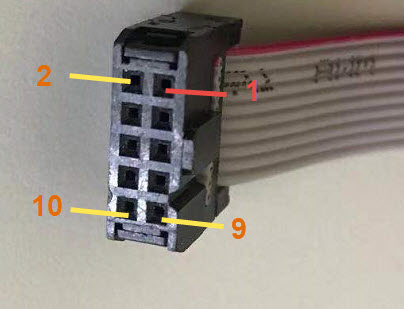
- #Using cable usb blaster usb 0 device 1 instance 0x00 install
- #Using cable usb blaster usb 0 device 1 instance 0x00 Patch
- #Using cable usb blaster usb 0 device 1 instance 0x00 software
- #Using cable usb blaster usb 0 device 1 instance 0x00 code
Info: Quartus II Programmer was successful. Info: Ended Programmer operation at Fri Dec 8 11:35:04 2006 Info: Successfully performed operation(s) Info: Configuration succeeded - 1 device(s) configured
#Using cable usb blaster usb 0 device 1 instance 0x00 code
Info: Device 1 contains JTAG ID code 0x020B40DD Info: Started Programmer operation at Fri Dec 8 11:35:01 2006 Info: Using programming cable "USB-Blaster " Info: Command: quartus_pgm -no_banner -mode=jtag -o p /opt/altera8.0/nios2eds/examples/verilog/niosII_cycloneII_2c35/full_featured/NiosII_cycloneII_2c35_full_featured.sof $ nios2-configure-sof /opt/altera8.0/nios2eds/examples/verilog/niosII_cycloneII_2c35/full_featured/NiosII_cycloneII_2c35_full_featured.sof Then plug in your USB Blaster, connect to your dev board (2C35 here). Next, create an empty file in your home directory named “.
#Using cable usb blaster usb 0 device 1 instance 0x00 install
Now, you can install nios2gcc tools and uClinux-dist. You can find more usage of command line tools on section 2-4 of Embedded Design Handbook (highly recommended reading). If quartus ask you the license file for the first run, enter. Now you can run quartus, just enter "quartus" in this command shell. (You may add a startup script: /opt/altera8.0/nios2eds/user.bashrc)

Version 8.0, Built Tue May 27 22:59: Welcome to the Nios II Embedded Design Suite This will open a Bourne-again shell (bash) with a pre-configured environment. QUARTUS_ROOTDIR=/opt/altera8.0/quartus /opt/altera8.0/nios2eds/sdk_shell Put this line in a script file, say "n2sdk", in ~/bin dir. (You may need to reboot, or you can run these command lines to start these servers) opt/altera8.0/quartus/linux/lmgrd -c /opt/licenses/license.dat As root or via sudo.Ĭp /opt/altera8.0/quartus/linux/pgm_parts.txt /etc/jtagd/jtagd.pgm_partsĪdd these lines to /etc/rc.local to start license manager and jtag server.
#Using cable usb blaster usb 0 device 1 instance 0x00 software
VENDOR mgcld "/opt/altera8.0/modelsim/modeltech/linuxaloem/mgls/lib/mgcld"Įven if you don't have the license to run quartus, you can still use other tools (such as jtag download and jtag debugger) for software development. VENDOR alterad "/opt/altera8.0/quartus/linux/alterad" If you have a valid license file, it should be /opt/licenses/license.dat, and begin with

while "nios2eds" and "ip" are more officially used by Altera.) (Ed., we don't need "8.0" numbered for each subdir when the parent dir already spelled it. This will install the programs in the following default directories :
#Using cable usb blaster usb 0 device 1 instance 0x00 Patch
Replace install_download file with: install_download (A patch is included). (have a look at /opt/altera8.0/download_install_8.0_log.txt)

ModelSim installation will fail with included install_download script. Put these files in a dir, as root or via sudo You could also restart your system if that's easier.Īnd install all Altera design suits from Altera's website. Once the line has been added to /etc/fstab, you can mount the file system by entering the command The mode will be set to 0666 which means that everyone can read/write the files that are created there. This will automatically mount the usbfs to the location /proc/bus/usb on startup. Usbfs /proc/bus/usb usbfs devmode=0666 0 0 On Ubuntu/Suse, add/edit the following line in the file /etc/fstab. The jtag port USB Blaster needs usbfs to work. On Ubuntu, check if the default shell is "bash", (the default might be "dash", which won't work with install scripts)įollowed by a logout and log back in again. Make sure you have tcsh isntalled, otherwise install it, as root or via sudo The procedures described here work with Ubuntu 8.04, Fedora 9 and Suse 10.3. It is possible to use other Linux distro. You may find step by step guide on Linux installation and usage from Redhat's doc



 0 kommentar(er)
0 kommentar(er)
